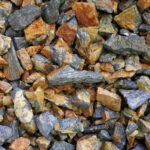From Financial Times
Chinese LNG demand is soaring — so much so that Beijing spared the product from tariff rises
When China last week set out a list of US exports threatened with retaliatory tariffs, almost all fossil fuels were covered, including oil, coal and liquefied petroleum gases such as propane.
There was, however, one conspicuous exemption: liquefied natural gas. Beijing’s decision not to impose additional tariffs on US LNG shows the critical role that the fuel plays in the Chinese government’s plans as it attempts to curb the country’s reliance on coal.
China’s demand for LNG is soaring, and its imports of gas from the US have been rising fast: from nothing in 2015 to 17bn cubic feet in 2016 to 103bn cubic feet last year.
By deciding not to restrict imports of US LNG, China has let its energy policy override its trade policy, for the time being at least. That is an encouraging sign for the companies including Venture Global LNG, Qatar Petroleum, LNG Ltd and Tellurian that are hoping to be part of a second wave of investment in US LNG export plants. For any would-be seller of LNG looking for buyers, China is the big prize.
Already last year China was the third-largest destination for US LNG exports, behind Mexico and South Korea. Its demand for gas is expected to continue to grow rapidly, accounting more than a quarter of all global consumption growth between 2015 and 2040 according to the US Energy Information Administration.
Rapid demand growth in China and other emerging economies meant 2018 was shaping up to be an exciting year for aspiring US LNG exporters. After three years without a single new plant being given the go-ahead, several companies say they are approaching final investment decisions to build their planned facilities. But the escalating trade dispute between the US and China casts a shadow over those plans.
A first wave of US LNG plants has been under construction along the Gulf of Mexico coast.
The earliest, Cheniere Energy’s Sabine Pass in Louisiana, shipped its first cargo in 2016, and the last is expected to be completed in 2020.
An expected second wave, however, has been on hold. There has not been an approval for a new US LNG plant since 2015, because of what seemed to be a looming glut in the market. Then last month Cheniere announced it was going ahead with an expansion at its Corpus Christi plant in Texas. It was a signal that the logjam holding up new investment is starting to break.
Baker Hughes, General Electric’s affiliate that provides products and services for the oil and gas industry, is supplying equipment for the expansion at Corpus Christi, and hoping for more orders. Pablo Avogadri, the company’s LNG platform leader, said it was “excited about the new market conditions”.
A new LNG plant takes about four years to build, so investment decisions now are based on expectations of conditions after 2022, but there seemed to be so much new production coming on to the market, from Australia and the first wave of US plants, that it looked as though there could be an oversupply into the next decade.
Those expectations of excess supply have been eroded, however, because demand for LNG has also been soaring.
China increased its imports by 46 per cent last year, overtaking South Korea to become the world’s second-largest LNG buyer. Demand is also growing more widely. The number of importing countries has risen from 35 in 2015 to 40 last year, according to the International Group of Liquefied Natural Gas Importers, and worldwide imports rose 18 per cent over the same two-year period.
“There hasn’t quite been as big a surplus of gas as everyone thought there was going to be,” said Frank Harris, an analyst at Wood Mackenzie. “There is some real momentum now behind the next wave of export projects.”
Other countries, including Russia, Qatar and Mozambique, are also offering increased LNG production in the future, but the US is a highly competitive supplier because of the abundance of low-cost gas unlocked by the shale revolution. Brian Gilvary, BP’s chief financial officer, told a Financial Times conference last week that the company expected US gas to continue to be “the lowest cost of supply . . . in the world”.
Until now, the problem for companies hoping to launch second wave US LNG export projects has been that they could not satisfy both their customers and their financiers simultaneously. To have confidence to provide project financing for a multibillion-dollar plant, lenders have wanted to see 20-year contracts that guarantee revenues. But seeing the expected glut, customers were reluctant to tie themselves down with such long-term commitments.
Now attitudes are shifting. In February Cheniere signed a contract with China National Petroleum Corporation to sell 1.2m tonnes per year until 2043. Venture Global LNG, a privately held company that aims to develop two new LNG plants in Louisiana, in May signed long-term contracts with BP and Galp of Portugal, to add to existing contracts with Royal Dutch Shell and Edison of Italy.
Venture Global is using an innovative technology for its proposed plants: rather than constructing the LNG production facilities on site, it is using large modules made by Baker Hughes in northern Italy, which need much less assembly on location.
“The execution risk is much smaller than for any other project,” Michael Sabel, one of Venture’s co-chief executives, said. He added that he was “very confident” about being able to go ahead with the company’s first project to export 10m tonnes per year from Calcasieu Pass, Louisiana, with the first shipments starting in 2022.
“It’s no longer about guessing which projects and when they are going to go ahead,” he said. “Ultimately the customer decides, and that’s what they have done.”
Other companies with US projects also say they are making good progress. LNG Ltd, which is developing the Magnolia LNG plant, also in Louisiana, is aiming to make an investment decision by early next year.
Tellurian, where former Cheniere chief executive Charif Souki is chairman, has a different business model but is also making headway. It is looking for equity investors in its plant, who would also be customers for the LNG, and has about 25 companies working through its data room.
Meg Gentle, chief executive, said that by the end of the process, Tellurian expected to have “four to eight” investors.
Golden Pass LNG in Texas, a joint venture between Qatar Petroleum and ExxonMobil, is also expected to be given a final investment decision this year.
The biggest threat to all these plans, however, is the trade dispute between the US and China.
Even if US LNG exports have been spared for now, the prospect of being shut out of the world’s biggest growth market will hang over the industry until the hostilities are brought to an end. Jason Bordoff of Columbia University’s Center on Global Energy Policy said: “If you’re thinking about investing in new US LNG export capacity, and you see the potential for an escalating trade conflict to possibly lead to tariffs on US LNG in China, you might think twice and consider investing elsewhere instead.”
Buyers and sellers look to liquid market
An increasingly significant factor for US LNG exporters is the shift in the global market away from long-term contracts towards flexible short-term sales. Last year 27 per cent of LNG worldwide was sold on a spot basis or on a contract of four years or less, up from 19 per cent in 2010, according to the International Group of Liquefied Natural Gas Importers.
As the market becomes more liquid, buyers such as utilities become more confident that they will be able to secure gas when they need it, and sellers become more confident that they will be able to find a market. BP for example, is aiming to increase its portfolio of LNG from 15m tonnes per year today to about 25m tonnes per year, from its own plants or by buying from other producers.
This year BP and Royal Dutch Shell have signed contracts with Venture Global LNG to buy gas from its proposed plant in Louisiana, to add to the portfolios of gas that they can sell around the world. They are making a bet that when the gas is available they will be able to find a profitable market for it somewhere.
“It is no coincidence that it is four European companies that have signed up to buy gas from Venture Global,” Ira Joseph of S&P Global Platts said. “They have the ability to sell into European markets, or to divert it elsewhere.”







